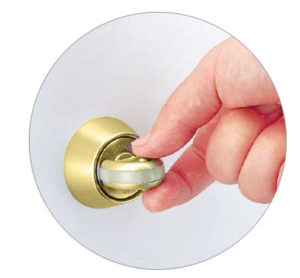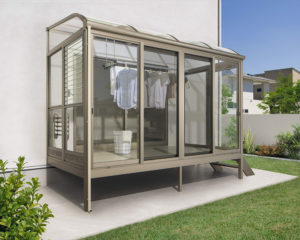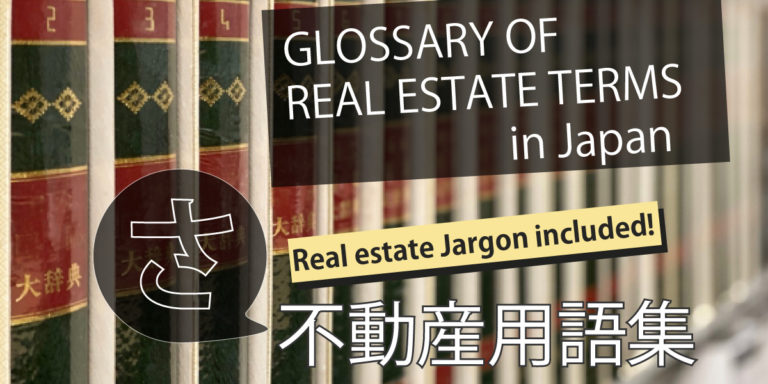- 1 Real estate Terms -さ(SA),ざ(ZA)-
- 1.0.1 サービスアパートメント[SERVICE APARTMENT] (さーびすあぱーとめんと)
- 1.0.2 サービスルーム [SERVISE ROOM] (さーびするーむ)
- 1.0.3 災害危険区域 [SAIGAI KIKEN KUIKI] (さいがいきけんくいき)
- 1.0.4 サービス付き高齢者向け住宅(サ高住) [SERVICE TSUKI KOUREISHA MUKE JYUTAKU] (さーびすつきこうれいしゃじゅうたく)
- 1.0.5 サービスヤード [SERVICE YARD] (さーびすやーど)
- 1.0.6 サイクルポート [CYCLE PORT] (さいくるぽーと)
- 1.0.7 再建築不可 [SAIKENCHIKU FUKA] (さいけんちくふか)
- 1.0.8 サイディング [SIDING] (さいでぃんぐ)
- 1.0.9 在来工法 [ZAIRAI KOUHOU] (ざいらいこうほう)
- 1.0.10 サムターン [THUMB TURN] (さむたーん)
- 1.0.11 更地 [SARACHI] (さらち)
- 1.0.12 サンルーム [SUN ROOM] (さんるーむ)
Real estate Terms -さ(SA),ざ(ZA)-
サービスアパートメント[SERVICE APARTMENT] (さーびすあぱーとめんと)
Serviced apartments are equipped with furniture, a kitchen, and appliances such as a washing machine, refrigerator, and TV, etc., which are not usually provided in hotels. In most cases, cooking utensils, rice cookers, microwave, and oven are also included in the kitchen. Not as much as in hotels, but there is a room cleaning service.
サービスルーム [SERVISE ROOM] (さーびするーむ)
Under the Building Code, a living room must have a window size of at least one-seventh of the floor area in a dwelling, but a room that does not meet that standard is called a “service room”.
For example, when the floor plan is shown as “○LDK+S”, “S” is the service room’s. 納戸[NANDO] (なんど) “closet” is often used in the same sense.
災害危険区域 [SAIGAI KIKEN KUIKI] (さいがいきけんくいき)
An area designated as an area at significant risk from tsunamis, storm surges, runoff, etc.
The area designated by the local government by ordinance, and in order to prevent or mitigate disasters in the area. This is a system based on the Building Standards Law, which regulates the use of buildings, ground and floor heights, structure, etc.
サービス付き高齢者向け住宅(サ高住) [SERVICE TSUKI KOUREISHA MUKE JYUTAKU] (さーびすつきこうれいしゃじゅうたく)
Barrier-free housing that is easy for the elderly to live in in terms of size and facilities (hardware) and includes services such as nursing and medical care (software).
サービスヤード [SERVICE YARD] (さーびすやーど)
A so-called backyard, side yard or private garden. A part of the garden directly connected to the kitchen and used for washing, drying clothes, garbage storage, pathways, etc. it is loanwords (和製英語 [WASEI EIGO] Japanese-made English).
サイクルポート [CYCLE PORT] (さいくるぽーと)
When a number of bicycles are shared, a shared bicycle is parked and borrowed/returned by users. It can also mean, in other words, a bicycle storage area attached to a building. In both cases, it is loanwords (和製英語 [WASEI EIGO] Japanese-made English).
再建築不可 [SAIKENCHIKU FUKA] (さいけんちくふか)
The condition of the building is such that it cannot be rebuilt or extended. For example, lot that do not meet 接道義務 [SETSUDOU GIMU] (せつどうぎむ) “tangent obligations” and 既存不適格物件 [KIZON FUTEKIKAKU BUKKEN] (きぞんふてきかくぶっけん) “existing non-qualified properties” are not allowed to be rebuilt.
*既存不適格物件 [KIZON FUTEKIKAKU BUKKEN] (きぞんふてきかくぶっけん) : A building made illegal by a change in law or urban planning is an “existing ineligible building” and is not “IHAN KENCHIKU BUTSU”.
サイディング [SIDING] (さいでぃんぐ)
A finishing material for the exterior walls of a building. Wood, cement plate, metal, ceramic, etc. are used.
在来工法 [ZAIRAI KOUHOU] (ざいらいこうほう)
It is one of the wooden construction methods for building structures. It is a simplified and developed version of the traditional construction method (伝統工法[DENTOU KOUHOU (でんとうこうほう)]) that has been developed in Japan since ancient times. It is also known as 木造軸組構法 [MOKUZOU JIKUGUMI KOUHOU] (もくぞうじくぐみこうほう).
サムターン [THUMB TURN] (さむたーん)
This is a metal fitting that can be locked by turning with a finger. From the outside, the door can only be opened and closed with a key, but from the inside, the door can be locked by turning Thumb Turn.

更地 [SARACHI] (さらち)
Land where no buildings etc. exist
サンルーム [SUN ROOM] (さんるーむ)
A room that has been designed to allow a large amount of sunlight to enter the room.
Often the roof and walls are covered with glass or large windows are installed.


